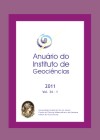Quartz-Muscovite and Pegmatite Stockscheider in the Dome of Ritápolis Granitoid, Region of São João del Rei, Minas Gerais
DOI:
https://doi.org/10.11137/2011_2_59-69Abstract
Clusters of essentially quartz-muscovitic rocks were found in four areas of the São João del Rei Pegmatite Province in close association with pegmatites positioned parallel to the contact between the Ritápolis granitoid and the metavolcanic - metasedimentary rocks of the Rio das Mortes greenstone belt. The suite of accessory minerals associated to the quartz-muscovite and pegmatite stockscheider (columbite-tantalite, cassiterite, gahnite, zircon, xenotime and monazite) are similar to those determined for the pegmatites of the province. The mineralogy of inclusions (Pb-tantalite, microlite, Pb-microlite, U-microlite, Ba-microlite, Hf-rich zircon) in the Fe-columbite associated to the stockscheider is similar to those determined for the Fe-columbite of the more evolved pegmatites found in the province. The quartz-muscovite and pegmatite stockscheider are related to Ritápolis granitoid with is related to the other pegmatites of São João del Rei Pegmatite Province. The proposed mechanism for the formation of clusters of muscovite-quartz and pegmatitic stockscheider is the crystallization of pockets of tardi-magmatic and pos-magmatic hydrothermal - metasomatic fluids segregated from the parental granitic magma and injected into fractures parallel to the roof contact of the granitoid dome.Downloads
Download data is not yet available.
Downloads
Published
2011-01-01
How to Cite
Pereira, R. M. (2011) “Quartz-Muscovite and Pegmatite Stockscheider in the Dome of Ritápolis Granitoid, Region of São João del Rei, Minas Gerais”, Anuário do Instituto de Geociências. Rio de Janeiro, BR, 34(2), pp. 59–69. doi: 10.11137/2011_2_59-69.
Issue
Section
não definida
License
This journal is licensed under a Creative Commons — Attribution 4.0 International — CC BY 4.0, which permits use, distribution and reproduction in any medium, provided the original work is properly cited.















